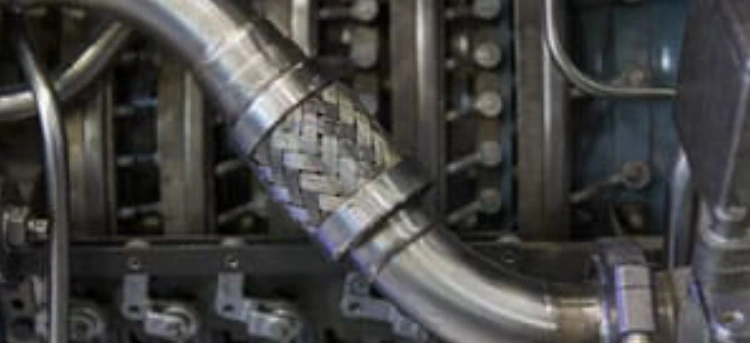For decades, nitric acid has been the go-to chemical for passivating stainless steel. Its powerful oxidizing properties remove free iron and restore the passive chromium oxide layer on metal surfaces. But growing awareness of workplace safety, environmental responsibility, and process optimization has sparked the rise of citric acid-based alternatives, with Citrisurf 3050 leading the charge.

06
AugCitrisurf 3050 vs. Nitric Acid: A Modern Take on Pipe Passivation
In industries where Cleaning and Passivation in Pharma, Cleaning and Passivation in Food, and De-Rouging Solutions in Semiconductor are crucial, selecting the right passivation method is more than a technical decision—it's a strategic one. This blog breaks down the key differences between Citrisurf 3050 and nitric acid, so you can make the best choice for your operation.
What Is Nitric Acid Passivation?
Nitric acid passivation uses a highly concentrated oxidizer (typically 20–25% nitric acid) to dissolve contaminants and iron particles from the stainless steel surface. Once these are removed, the metal naturally reforms a chromium-rich oxide layer that protects it from corrosion.
Benefits:
- Strong and fast oxidizer
- Industry-standard for decades
- Widely accepted in validation protocols
Limitations:
- Generates toxic fumes (NOx)
- Requires fume hoods and neutralization systems
- Hazardous for workers
- Corrosive to non-target materials
- High disposal cost and environmental impact
Enter Citrisurf 3050: The Safer, Greener Alternative
Citrisurf 3050 is a proprietary blend of citric acid, surfactants, and chelating agents designed specifically for industrial passivation of stainless steel. It achieves the same goal—removing iron and enhancing corrosion resistance—without the dangers associated with nitric acid.
Advantages of Citrisurf 3050:
- Biodegradable and non-toxic
- No hazardous fumes
- Safe to handle, even in enclosed spaces
- Compatible with a wide range of stainless grades (including 304, 316, 316L)
- Easier disposal and lower compliance costs
- NSF registered for food-contact surfaces
Citrisurf does not aggressively attack the stainless steel. Instead, it selectively removes surface contaminants and promotes the formation of a uniform, protective passive layer.
Performance Comparison
In many tests and real-world applications, Citrisurf 3050 has demonstrated performance equal to or better than nitric acid. Here's a breakdown of key performance areas:
Corrosion Resistance:
Studies show that Citrisurf-treated surfaces perform on par with nitric-treated ones in salt spray and immersion tests.
Rouge Removal:
When paired with Derouging Chemicals before passivation, Citrisurf effectively restores clean surfaces with minimal metal loss.
Surface Integrity:
Citric acid is gentler on stainless steel, preserving microfinish and reducing the risk of etching—critical for pharmaceutical-grade pipelines.
Regulatory Compliance:
Citrisurf products meet ASTM A967 and A380 standards, making them acceptable in FDA-regulated environments.
Use Case: Cleaning and Passivation in Pharma
Pharmaceutical pipelines must meet rigorous standards of cleanliness, corrosion resistance, and sterility. Nitric acid, while effective, can leave toxic residues and cause compliance concerns during validation.
Citrisurf 3050 allows clean-in-place (CIP) systems to operate without shutting down for fume extraction or environmental containment. Its effectiveness and safety make it ideal for Cleaning and Passivation in Pharma, especially for SS316L piping carrying WFI, buffers, or active pharmaceutical ingredients.
Use Case: Cleaning and Passivation in Food Industry
In food-grade applications, avoiding chemical residues is paramount. Citrisurf’s non-toxic profile means it won’t contaminate food-contact surfaces or require excessive rinsing. It helps maintain sanitary conditions and complies with FDA and USDA guidelines—without the burden of nitric acid’s regulatory baggage.
Use Case: Semiconductor and High-Purity Applications
In semiconductor manufacturing, even nanograms of metallic contamination can ruin wafers. Electropolishing is common, but post-installation derouging and passivation are still required. Citrisurf 3050 works synergistically with Derouging solutions and service, restoring passive layers on ultra-pure lines—safely and without damaging sensitive welds or bends.
Environmental & Safety Perspective
Environmental impact is a major differentiator. Citrisurf requires no hazardous waste handling, no special fume scrubbers, and minimal PPE. Nitric acid, by contrast, is a high-risk substance—classified as a strong oxidizer and corrosive agent, requiring restricted handling zones and costly permits.
Conclusion: Citrisurf 3050 Wins in Most Scenarios
While nitric acid remains in use due to legacy systems and familiarity, the trend is clear: Citrisurf 3050 is the future of stainless steel passivation.
It delivers:
- Equal corrosion protection
- Superior safety and sustainability
- Lower compliance and disposal costs
- Validation-ready results for pharma, food, and semiconductor sectors
In a world where cleaning, derouging and passivation must align with ESG goals, worker safety, and regulatory compliance, Citrisurf is no longer an alternative—it’s the new standard.

